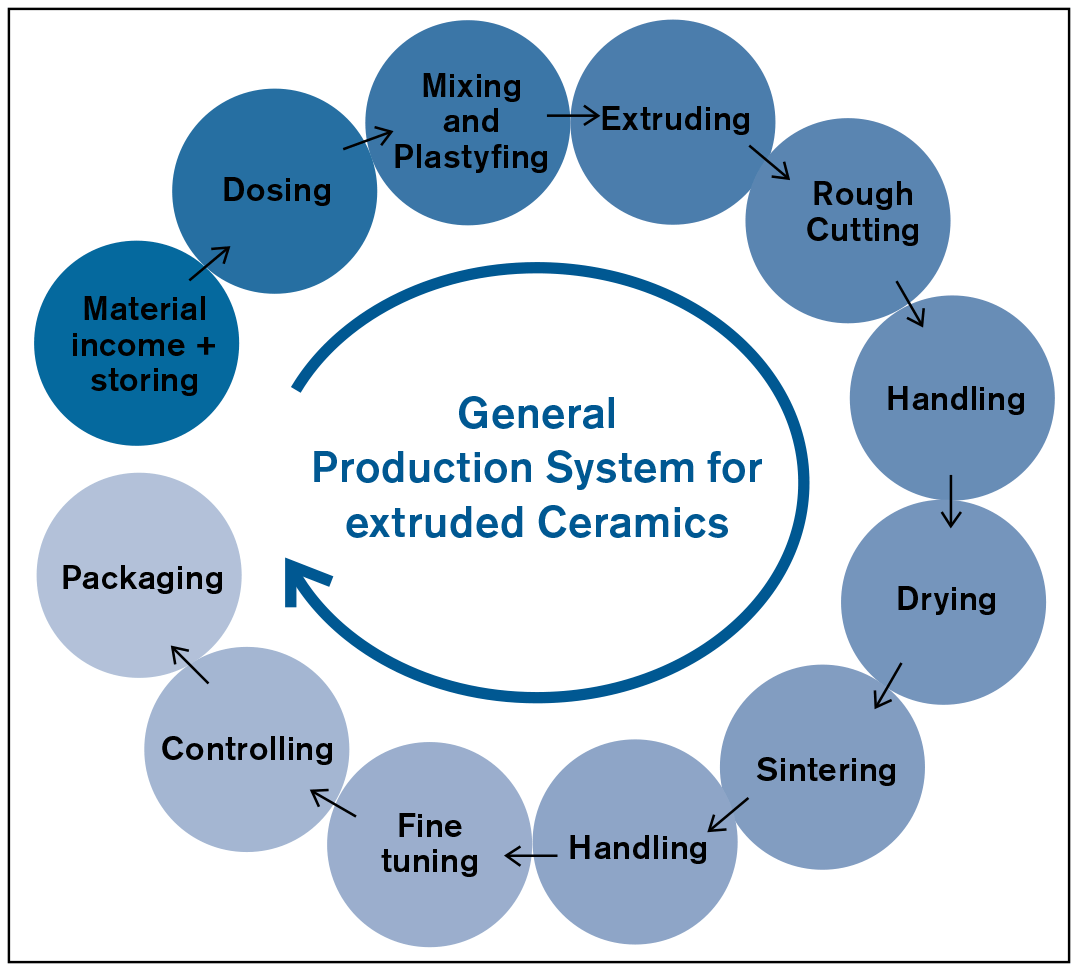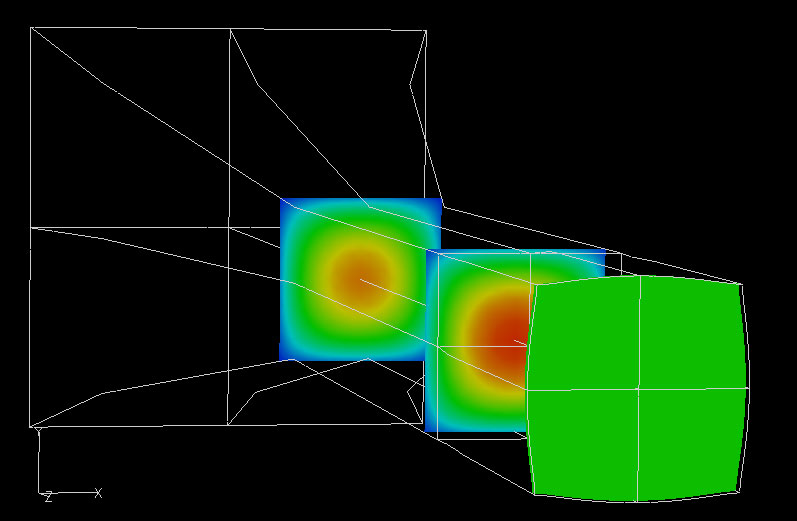

Who we are
My name is Frank Händle.
Since 1971 I have been dealing with extrusion for ceramic and related bodies. For the first 31 years as Managing Director of HÄNDLE GmbH,
then between 2002 and 2014 in the same position for ECT GmbH and ECT KEMA GmbH, until setting up frank händle transfer GmbH at the beginning of 2015.
During this long period, I had the privilege to accumulate a lot of theoretical and practical knowhow and experience in the extrusion of different ceramic products and
nonceramic bodies; bricks and tiles, filter plates and multichannel tubes, insulators, honeycombs, fuel cells and all kinds of ceramic and nonceramic profiles.
In my function as M.D. of frank händle transfer GmbH I concentrate on
- consulting for our customers in close cooperation with my former company ECT KEMA GmbH, or as an independent consultant,
- developing devices and methods to detect the rheological characteristics of ceramic and related bodies,
- perform R&D activities with renowned institutes, partners for our customers and ourselves,
- publishing and lecturing in the field of extrusion and rheology for ceramic and related bodies.

Our Consulting Concept
The overall result of our theoretical and practical experience and knowhow in the field of ceramic extrusion is condensed in the Smart Extrusion Concept (SEC):
- Process and resultfocused consulting
- Customer orientated partnership
- Integrated in a Total System Model
- Based on the detection of the rheological data
“Process and result focused” means that the production process downstream and upstream of extrusion is analyzed with regard to the required result.
“Customer orientated partnership” is an indispensable component of our work.
“Total System Model” means that the structure and the process are integrated in the analysis and design.
“Based on the detection of the rheological data” means that all relevant data are detected as a base for the design of the extrusion equipment.


Rheology & Plasticity
Do you really know the rheology of your ceramic body, the plasticity and extrudability?
How does your body change its characteristics during extrusion,
does it react “shear thinning” or “shear thickening”, is it thixotropic or rheopectic?
Over the years we have developed instruments, notably the Capillar Check and the Pen Check, as well as methods such as the “Kneading Curve”,
to detect and evaluate these essential characteristics of ceramic and related bodies. Whilst viscosity can clearly be defined and “extrudability“
can be defined and detected, the definition of plasticity is often vague. According to T. Haase and E. W. Brownell we differentiate between “deformation force”
and “rupture strength”.
Not only is the definition of ceramic plasticity often vague, the phenomenon itself is rather complex because of the many factors influencing plasticity.


Kneading Curve
“Kneading curve” is the denomination for a method developed by ECT in 2009 to describe qualitatively and quantitatively the relation
between the extruda bility and the shear energy implemented during the preparation of a ceramic body.
In our R&D work for our customers we were often confronted by the fact that a suitable and perfectly prepared and mixed body showed problems in extrusion,
for example extremely high pressure, laminations, etc.
With the help of the kneading curve we are able to define how much shearing energy is necessary for extrusion in optimal extrusion conditions.
The practical benefits are enormous: less wear because of lower pressures, less drying because of optimal moisture content, etc.

Extrudability
The term “extrudability“ describes how well a specific ceramic body for a specific ceramic product – the extrudate – can be extruded.
I.e. “extru dability” is a term describing multifactorial behaviour.
In his book “Structural Clay Products”, E. W. Brownell, formerly at Alfred University, N.Y., has coined a useful definition by differentiating “extrudability”
from the terms consistency, workability and plasticity.
Most of the different quantitative and qualitative features can be detected with the help of the Capillar-Check or
a well equipped laboratory extruder. A suitable test procedure has been worked out.



Pen Check I & III
The Pen Check is available in two versions:
Pen Check I and Pen Check III.
Both instruments are designed for measurement of the “deformation force”, i.e. a force which is generated on penetration of the
“penetration needle” into the green compact extruded body.
Pen Check I is a handheld instrument which can be used in situ, for example to test the deformation force of an extruded column
in the production plant. The knowledge of this value is of paramount importance for the processes following extrusion, such as cutting, handling and drying.
Pen Check III is a versatile instrument for use in the laboratory. It can be delivered with various penetration needles and sophisticated software to show and
record on the monitor of a laptop or desktop the development of the “deformation force”.
In addition, the Pen Check III can also be used to measure the bending strength of a dried sample, or to measure the friction between a compact ceramic
body and steel of different surface roughness.



The Capillar Check
The Capillar Check was developed for the measurement of the extrusion behavior of ceramic bodies, respectively for the detection of the relevant rheological data like viscosity, yield point, wall slippage or shear stress.
The Capillar Check follows the basic principle of the Capillary Rheometer and is designed for laboratory work as well as for control in production. The wide range of the column speeds, the possibility of using different dies, i.e. the detection of different shaping factors, and the related shear stresses allow the simulation, modification and optimization of the extrusion process.
Three types of Capillar Check can be delivered:
- KPM 35: capillar 35 mm, vertical extrusion, for the laboratory.
- KPME 35: capillar 35 mm, vertical extrusion, for production control and the laboratory.
- KPM50: capillar 50 mm, horizontal extrusion, for the laboratory.
For special rheological studies supplemental equipment and software for the evaluation of the detected data is available.

Flow Simulation
How to simulate the flow of the ceramic paste through a more or less complex die. And how we can use the flow simulation to avoid laminations in the extrudate.
For a long time most of the available tools created nice colorful pictures but, for various reasons, failed in practice.
One of the main reasons was the lack of reliable empirical data relating to the ceramic body, for example viscosity, wall slippage and yield point.
Therefore the first important step is the detection of these data with the help of the Capillar Check. For the detection and evaluation of these data,
we work together with cpe, the company of my associate Fritz Laenger.
For the second step, the simulation of the flow of the ceramic paste through a pressure head/die combination, we cooperate with the company
IANUS, Dortmund, who have gained their experience and knowhow through the flow simulation of thermoplastic bodies.
The third step is the design, construction and finetuning of the required pressure head/die combination; the domain of our experienced partners.




Our coordinates
frank händle transfer GmbH
Kisslingweg 10
75417 Mühlacker
Phone +49(0) 7041 8181754
Fax +49(0)7041 8181753
Mobile +49(0)172 7273747
f.haendle@haendletransfer.de
www.haendletransfer.de
google maps coordinates


